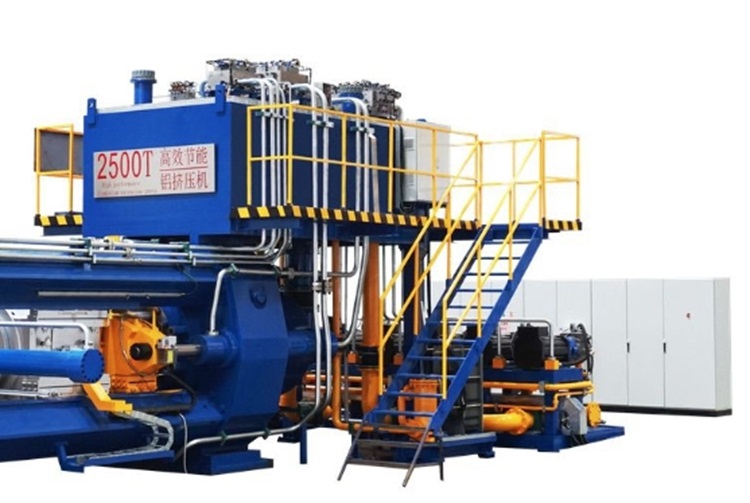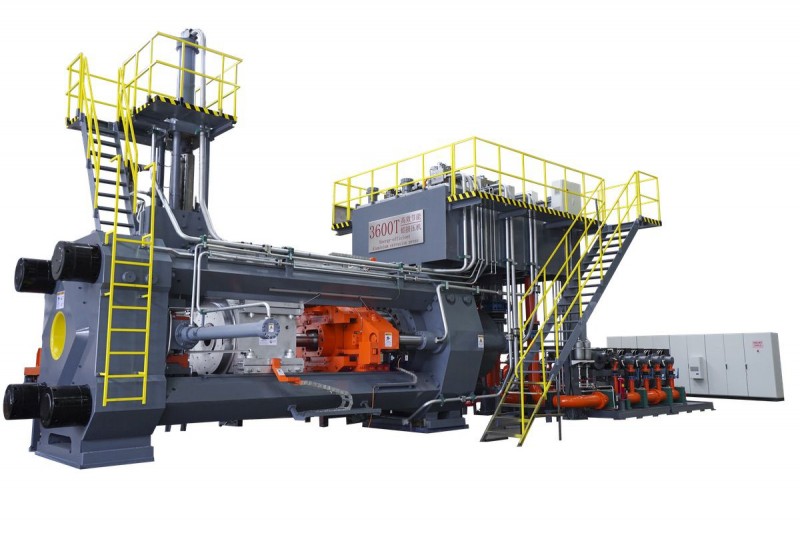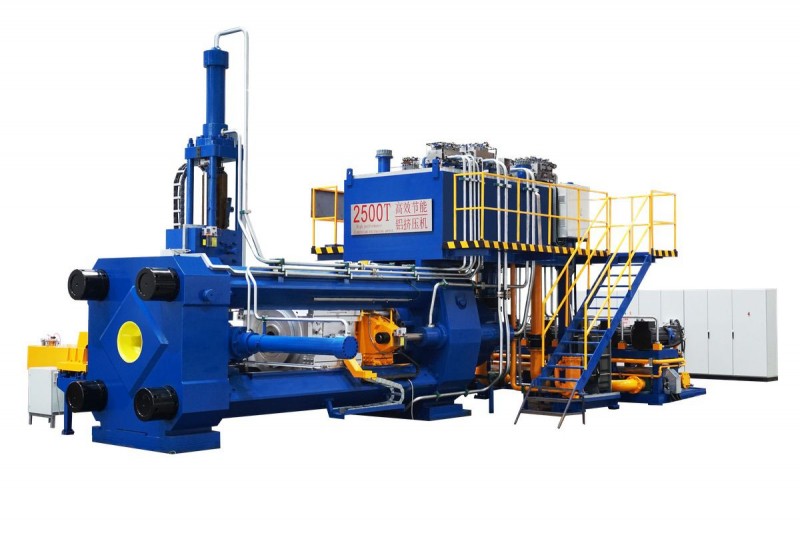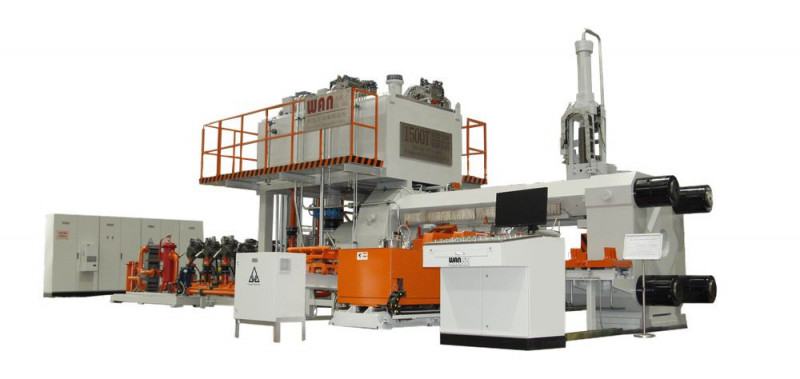In the extrusion process where materials such as aluminum are forced through a die to obtain specific cross-sectional shapes, an extrusion press forms one of the essential machines. From the side of aluminum extrusion by action asymmetrical press, hot billet is forced under enormous pressure, causing its deformation in profiles that are very popular as building materials.
The feature provided by the extrusion press is important in terms of production, for shaping complex and customer-specific designs with high precision. It is capable of generating highly defined profiles for a long time; but how does this translate into one about building materials making? This is an encompassing perspective.
As the core of construction parts, there is no replacement for aluminum extrusion presses which are enabling tools in shaping ready aluminum to fine details and sections. In this regard, when billets are forced through dies with the use of the extrusion method most certain cross-sectional shapes can be created under elevated temperatures.
This approach is popularly used in manufacturing window frames, doorframes, curtain walls and various construction-related structural components. Due to aluminum versatility in extrusion, architects and constructors are able to attain new heights of precision customization through design.
This is a process of altering the aluminum sheets through which they used in production conform to some desired forms. Sheet metal forming is critical especially in a number of roofs, walls as well as exterior parts. This approach provides uniformity and precision to the stability as well as esthetic in construction materials
Casting includes different procedures, for example die casting and sand molding that utilizes aluminum presses. These methods are used to design parts having accuracy, which is widespread in building civil work. Aluminum casting allows producing subjects from elements to structural hardware which are perfectly adjusted to the needs of modern construction work.
The stamping and punching operations employ tooled presses emblazoned with aluminum. This enables panels, perforation of patterns and sophisticated designs on aluminum sheets and profiles. These units which punched and stamped are usually used to be part of the decoration of buildings, thereby preserving their structural integrity by keeping it at its original material value.

There is a phrase that makes aluminum highly preferred choice for building elements because of its nature and durability. Aluminum presses make formed portions dealing with construction projects such as buildings, bridges and civil structures among other ventures.
Due to the great ratio of weight over strength, aluminum is very appropriate for manufacture used in building objects such as frame beams columns or trusses; press ensure the production of those critical things.
The versatility and aesthetic value of aluminum composite panels (ACP) have created a wide spectrum of applications in the construction industry. Pressing of aluminum is a critical process during ACP fabrication in which the core material hold isolator along with two metal layers containing pressure-based spiral surfaces.
Such panels have a high insulation coefficient and they are ductile form thus a common material used in facade systems as well their external thermal clad is a modern construction.
In construction industries aluminum presses serve a significant purpose of riveting and clinching for securing joining parts. This is mostly visible during the assembly of structural components as well as when providing long-lasting connections among multiple elements thereby promoting their overall stability and permanency.
Architectural details always add to the esthetic effect thus created. Aluminum here is used as a squeezed from aluminum presses (architects can use for calligraphy and ornamentation of elements, trims and other decor) produced in the form of plates.
Such accuracy, therefore gives architects and designers an opportunity to use rudiments effectively down even into the tiniest detail that could liven up professional endeavors where form defines function.
This implies that the press operators can construct shapes fit for a specific architectural endeavor and as per necessity. All in all, they can bend and fold aluminum sheets or profiles. Whether these are best formations with contemporary fronts or specialized structural elements, such bending aptitudes and other similar configurations obtainable via aluminum presses make room for building design choice as well as engineering construction.
Window and door frames are the most appropriate samples of building products manufactured using aluminum extrusion. The foremost consideration for this application is that it is lightweight but strong enough while constructing the respective structures. On the other hand, aluminum frames are remarkable in terms of structural integrity and apparently remain mysterious they do not change shape or performance characteristics with time.
Moreover, due to the built-in thermal conductivity in aluminum such buildings directly increase energy efficiency because it is possible to implement energy saving glazing solutions.
What is more, the aesthetics, functionality and performance achievable over a period of time enable application of aluminum extrusion in residential premises or commercial settings.
Curtain wall systems are a part of the modern architectural plan and therefore, making these curtains is critical to this program because aluminum extrusion. The use of aluminum extruding cladding elements in constructing curtain walls reaps immense benefits as the structures can be made through such constructions to effectively and permanently hold up very large areas or sizes glass panels.
Such systems allow weather protection of facility users, isolation from sound annoyance and the control of temperature to perfection that light may penetrate efficiently into a system.
Aluminum extrusion architecture has wide application with many renowned buildings across the world using it as curtain wall systems, for instance- Burj Khalifa in Dubai and Guangzhou Opera House China.
Extrusion of aluminum plays some roles in the generation from elements such as beams, columns and trusses. Aluminum profiles have high strength-to-mass ratios, suitable for application usage as these contribute to the overall structural load of a building while keeping weight low.
Such structural parts can be modified so as to meet design specifications which are a bit little bit complicated. That allows architectural engineering solutions.
Added in design, aluminum extrusion is a graceful and practical solution. The software solutions to be utilized will include furniture and lighting fixtures, handrails, shelving systems citing aluminum profiles. By creating details and complex shapes, designers are able to achieve various concepts; they can further enhance spaces by adding classiness with such sophistication that modernity.
Dependence of making moldings and trim for building or interiors, as well as exteriors on aluminum extrusion presses is very significant. With these presses, profiles can be customized to produce different décor elements such as cornices. baseboards and crown moldings among others
Extrusion guarantees precision in terms of designs and dimensions that can find reflection into architectural plans. It is available for both indoor and outdoor application due to its efficiency, resistance from corrosion. They are not only beautiful they also serve a purpose.
Support structures, gutters and downspouts are roofing system elements made of aluminum extrusions. These aluminum profiles that are extruded offer a lightweight solution to increase structural integrity of the buildings collectively.
The aluminum components of the roof are considered favorable depending on their ability to resist corrosion; thus, they have a lot of life span with little maintenance requirements in different climates. The extrusion process produces forms suitable for good drainage and adequate architectural detailing on the roof.
Aluminum extrusion presses are, therefore, versatile enough to produce ventilation parts and louvers which integrate in most building design. The custom-designed aluminum profiles extruded can be used to construct sturdy ventilation systems that work in promoting air circulation, ensuring design appeal.
For architects and builders, it is beneficial that louver construction be made precisely by use of extrusion which means design freedom. In addition, aluminum is resistant to rusting and hence suitable material for durable constructions.
Aluminum extrusion presses participate in manufacturing railings and balustrades essential for safety as well is architectural design. This method allows to develop customized railing designs that would meet the said requirements and the desire for appropriate individual decoration.
Though may be in is exposed to weather elements outside, aluminum railings are highly preferred because they fail not corrode even when being affected by such aspects. On the other hand, being a light metal, aluminum is easy to install while preserving shape and profiles because of extrusion process advantages hence better performing in terms if appearance.
The process of extruding aluminum has advanced significantly due to automation and robotics. Further, temperature pressure and speed levels are also computer-controlled this means that consistent results accuracy is achieved on all processes carried out with the controlling machine.
Advancements in robotics have revolutionized how aluminum extrusions are managed. We achieve a high degree of efficiency while using minimal labor required to process the products. quality control systems would be connected to the extrusion press in order for us to ensure that we continue with production and this is done by eliminating any flaws or wastage which may occur when manufacturing.
The industry has drastically gone towards recycling and reuse so as to focus on the issues of sustainability. Recycling some of the aluminum scrap during extrusion operations reduces dependence on primary production metal and consumes less excess energy. It is not only an environmentally responsible way of handling but also less energy consuming since the aluminum that needs to be refined and extracted demands higher quantities of high-priced electrical power.
In addition, the improvement of aluminum extrusion technology has been targeted in energy saving. Energy saving approaches from better insulation to optimized process control have been introduced, thus significantly lowering the carbon footprint associated with extrusion.
Building materials sector has its challenges and limitations in which both the manufacturers of aluminum extrusion products need to contend with. Second also is that the materials such as aluminum used, have limits on their designs to serve in complexity of architectural structures. However, the only thing may challenge in such situations is that it can be difficult to achieve shapes or profiles which would require manufacturing and assembly procedures.
From this point onwards, it becomes even more clearer that aluminum extrusion with regards to its cost is effective only in the larger projects. But for smaller specific projects builders paying attention to costs can be scared away by the cost of extrusion tooling and machinery. Other options instead of aluminum extrusion may need to be explored.
Here are some options you can consider as alternatives to aluminum extrusion in the construction industry:
Steel is a much stronger alternative to aluminum extrusion. It has a very good capacity for carrying loads and so is suitable to use. While steel is more massive than aluminum, it has flexibility in manufacturing profiles.
Aluminum can be replaced by FRP since this is corrosion resistant. This is quite applicable in those cases where weight removal is required as, for example, within chemical surroundings. FRP profiles can be bent to take different shapes, hence give room for design finesse. But it may lack the same strengthen that is aluminum in its structural applications.
A low-maintenance choice to aluminum is vinyl extrusion. It might not be very structurally sound but its insulation attributes make it an energy efficient material for building construction. Vinyl is also non-hygroscopic, rendering it to be used in most settings. However, there are operative limits on the use of vinyl because its load bearing capacity is quite small and designs provided by it may be complex.
Among the excellent options of construction materials, wood is considered among them due to its beauty in most aspects. Finishes for the interior, window and door framing often is chosen to be a standard option.
One strength of wood is that it provides a natural insulation especially if the surface pattern which makes people feel good. However, decay can be avoided if regular maintenance is done. Far from non-practicality but caused by imperfections other than environmental conditions and stress are inapplicable to most applications.
On the other hand, synthetic materials provide a mix of strength, light weight and corrosion resistance variations by composing pairs such as fiberglass carbon; or resins. Therefore, such composite profiles can be configured for applications that substitutes aluminum or traditional one.
However, the manufacturing cost and the complexity involved in the production processes may influence the adoption of materials.
Building materials are shaped by aluminum extrusion presses with advantages not limited to their strength, durability, customization options, and cost-effectiveness. They have become integral to window construction, door frames, curtain walls, structural members, and interior finishes.
The unfolding technology in automation drives the trends and innovation in the aluminum extrusion industry up to sustainability and robotic advancements Yet factors such as the production cost and how complex the manufacturing implications are may lead to changes in materials consonance.
Aluminum extrusion presses that process building materials hold numerous benefits beyond their strength, durability in construction 4th world war, customization options and cost effectiveness. They have become a part of building windows, door frames, curtain walls as well as different members that constitute these structures and finishing elements.
The development in technology of automation leads to trends and innovation in the aluminum extrusion industry even through sustenance, robotic progress thus. But one needs to contemplate the challenges of decision for materials beside other systems, and its limitations concerning design values.


